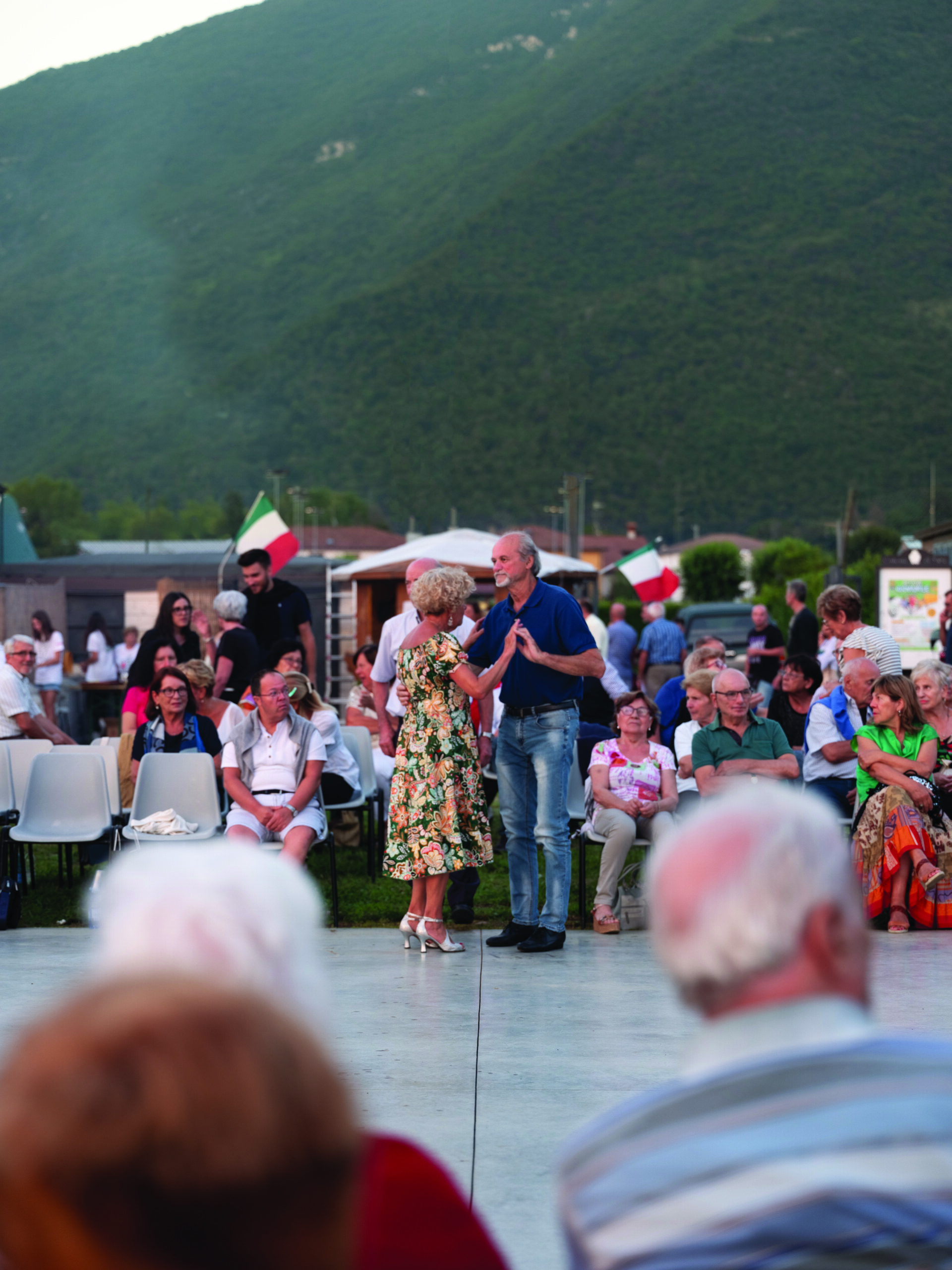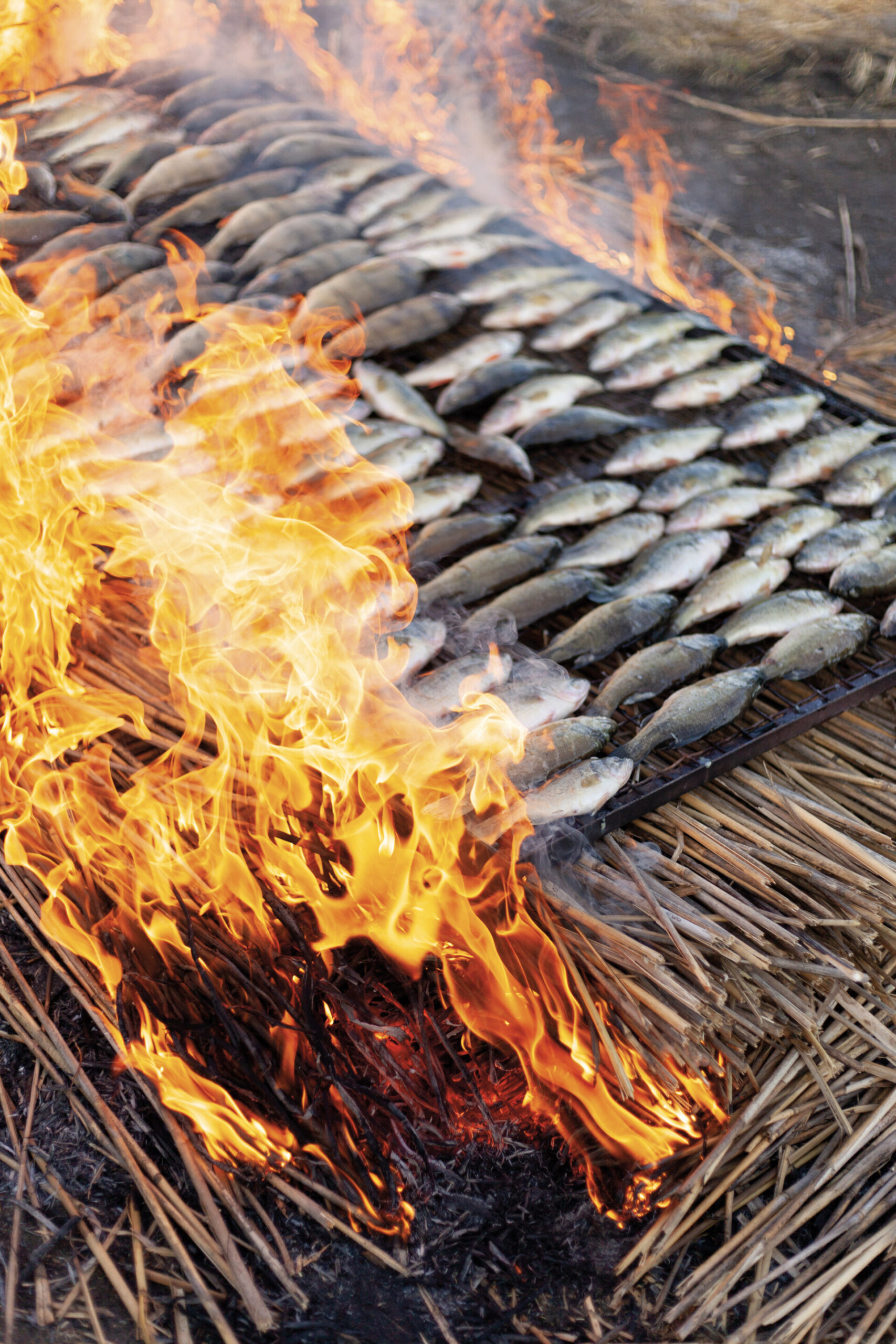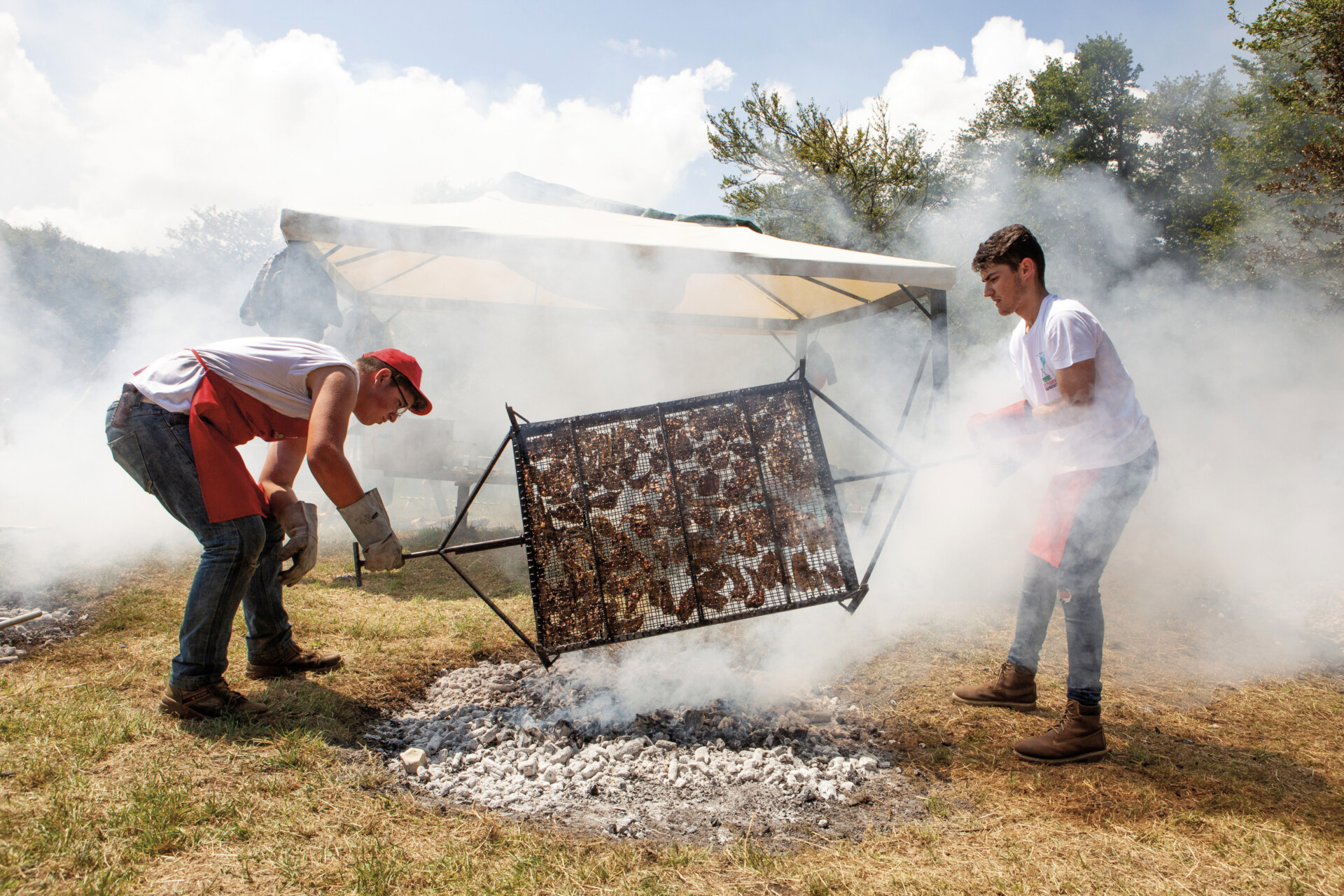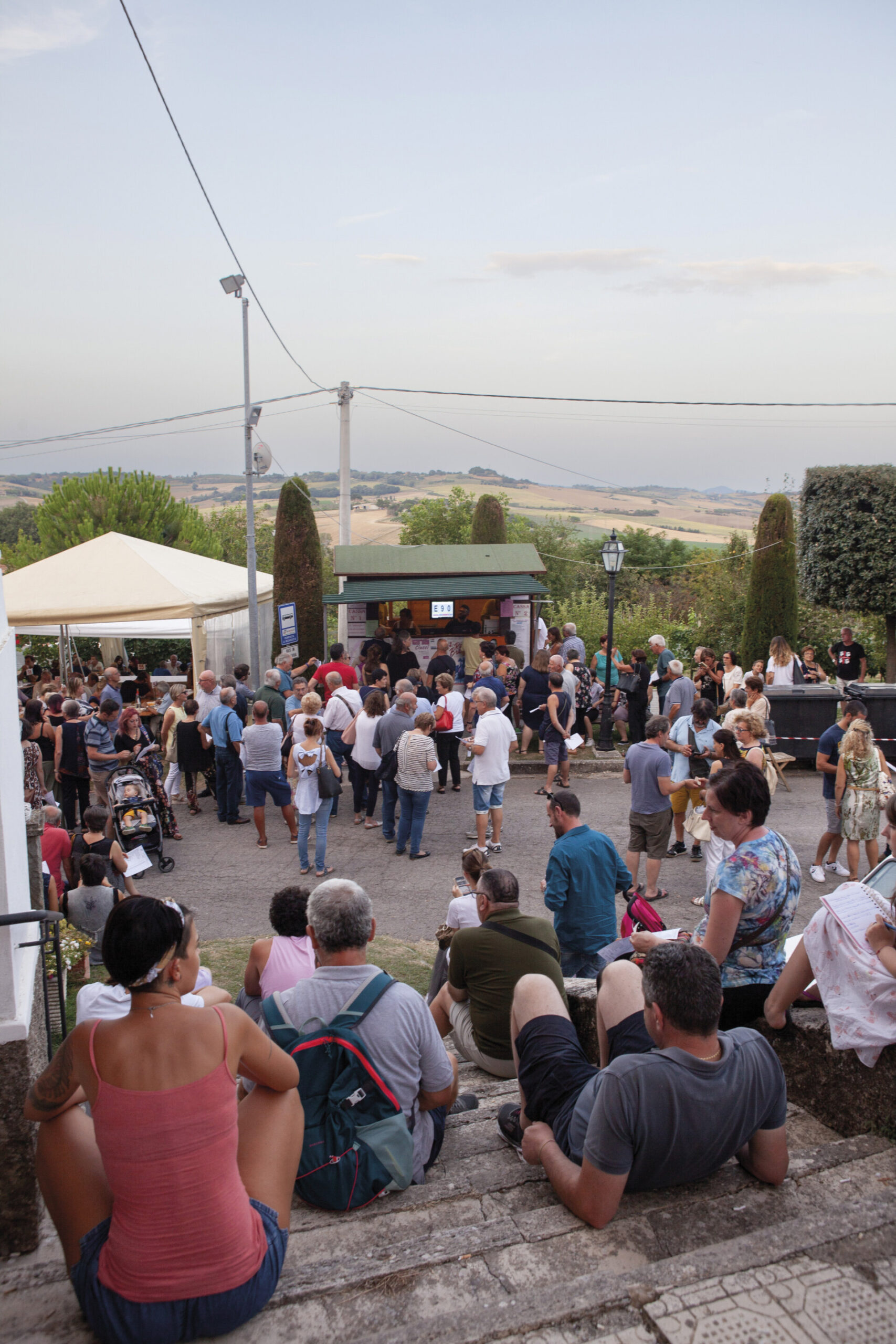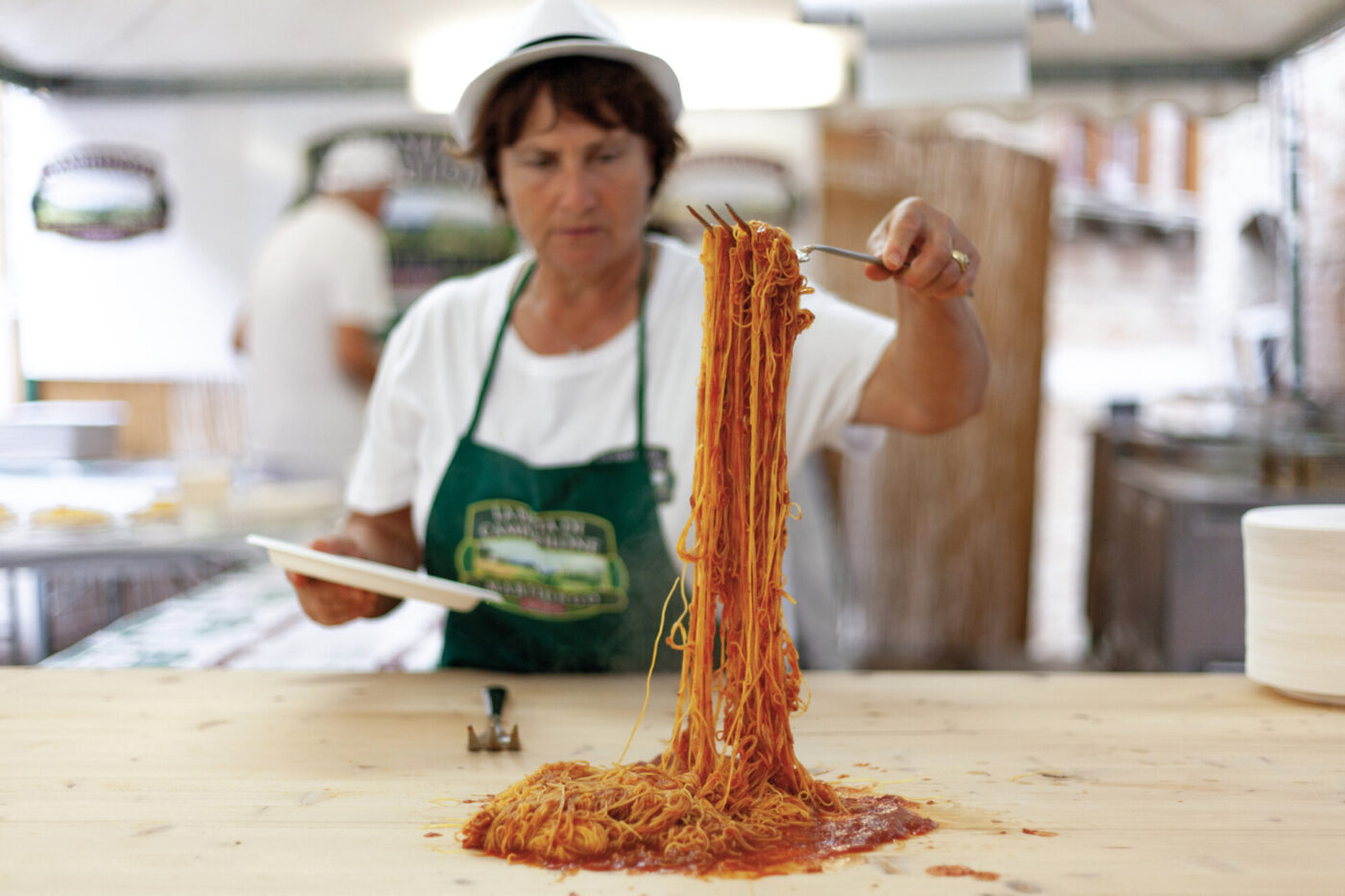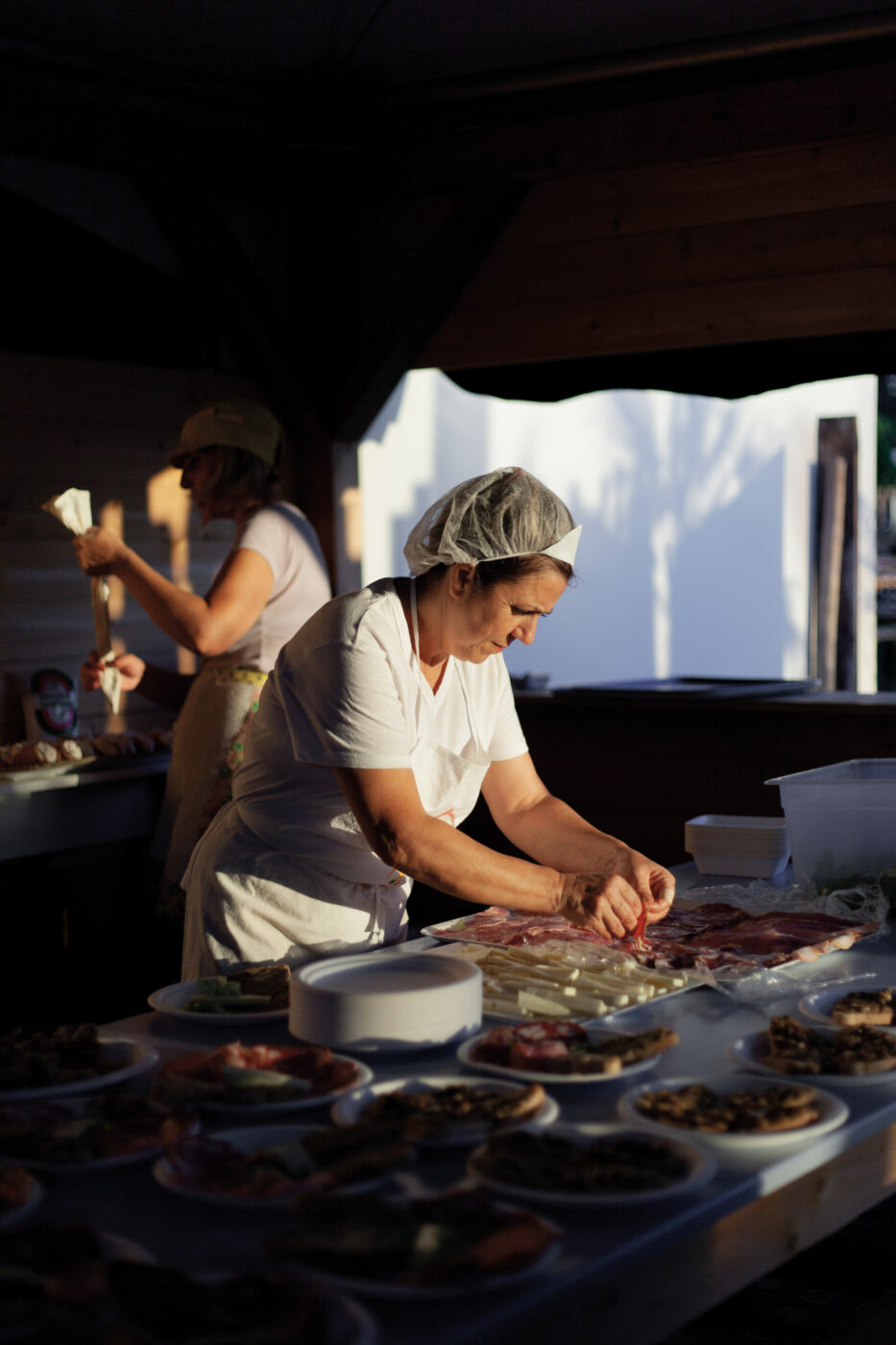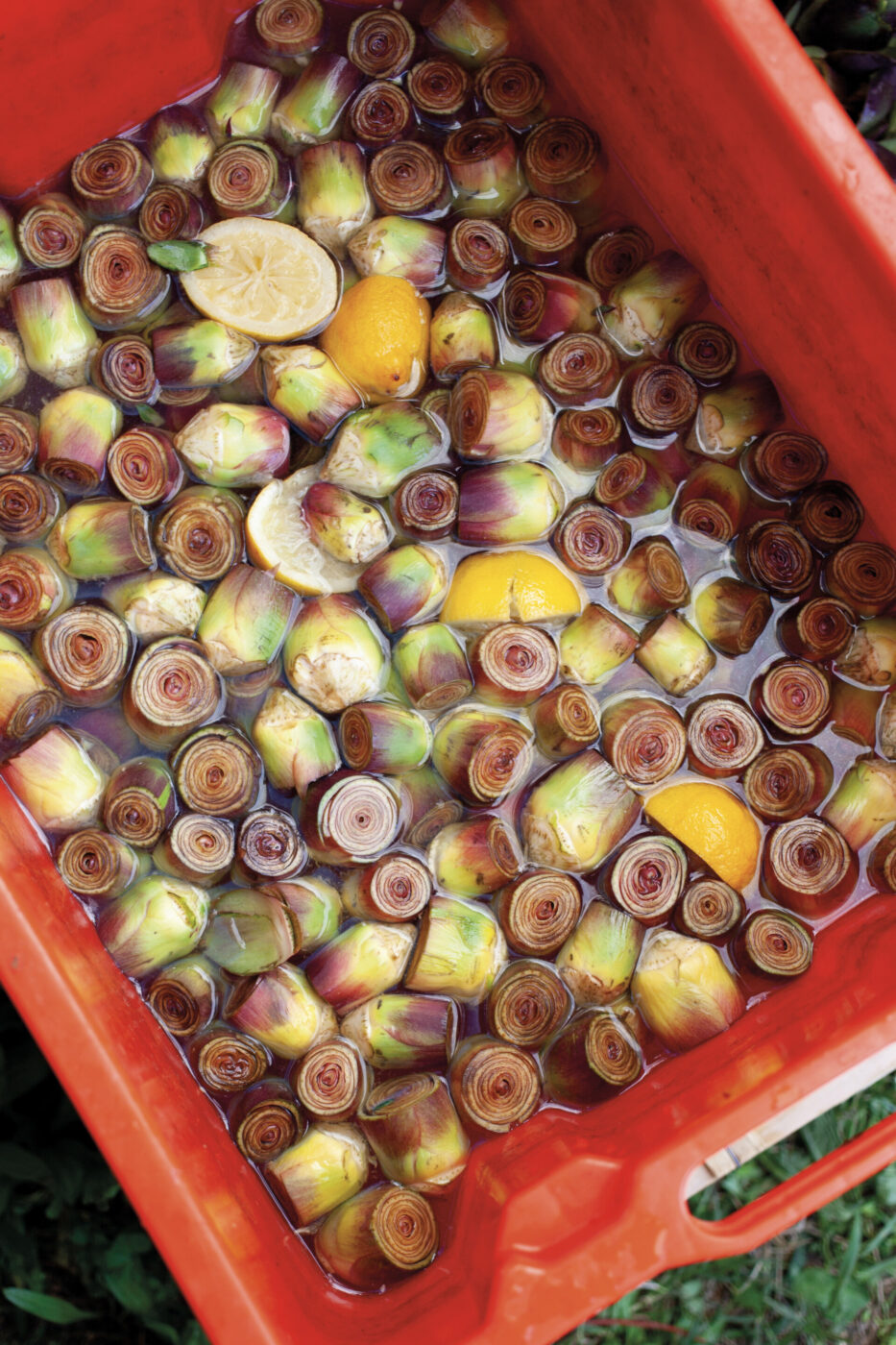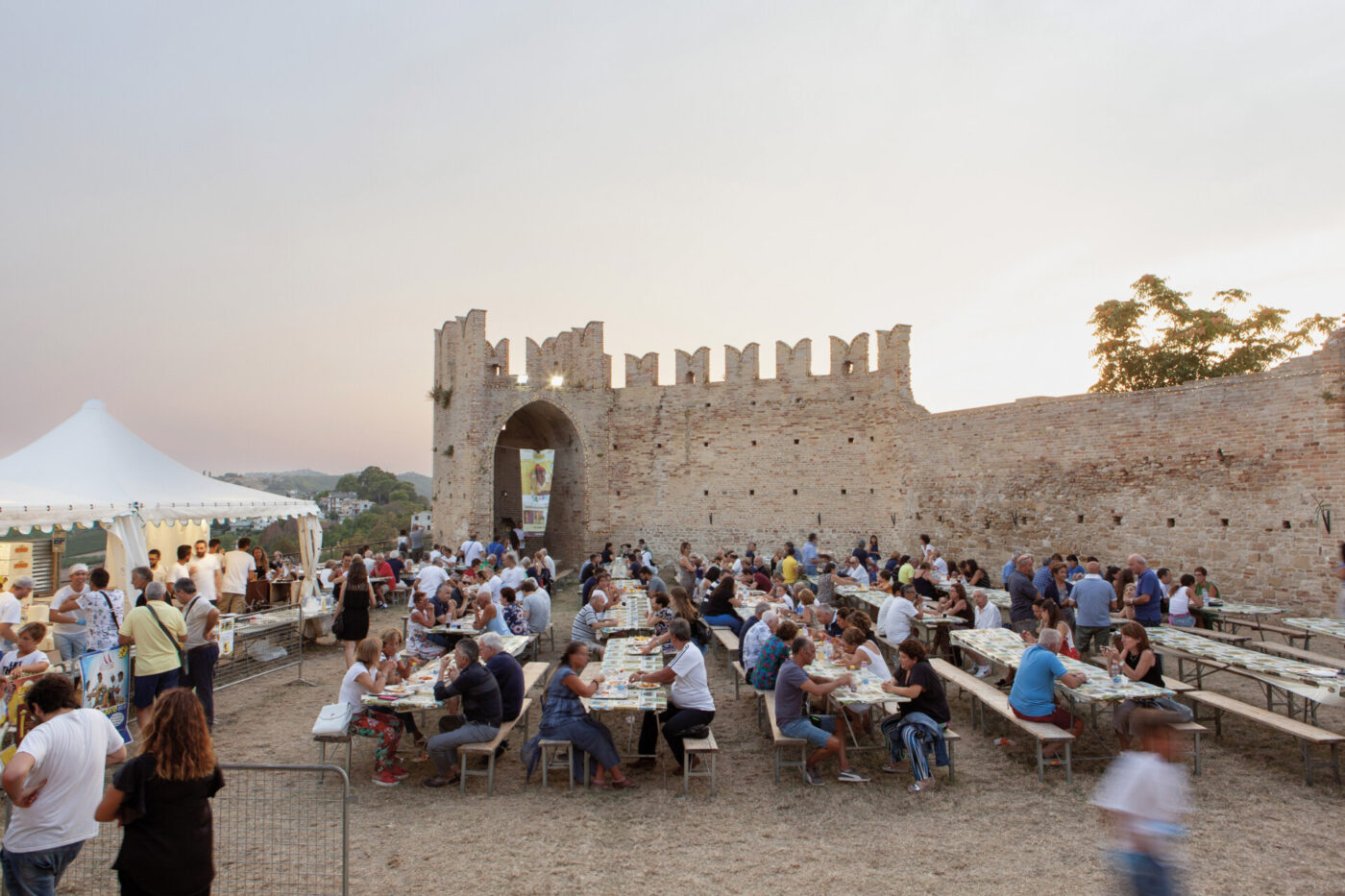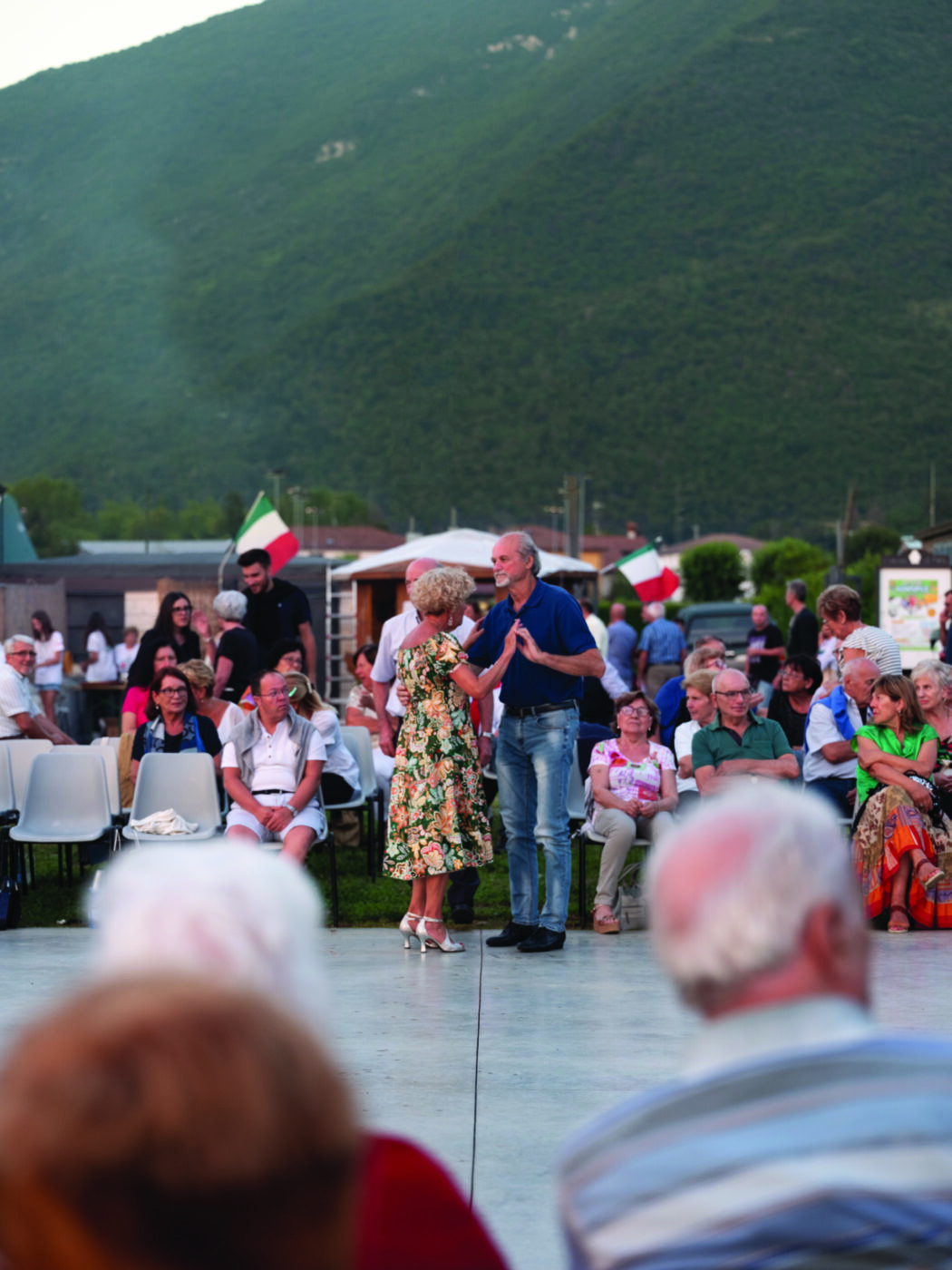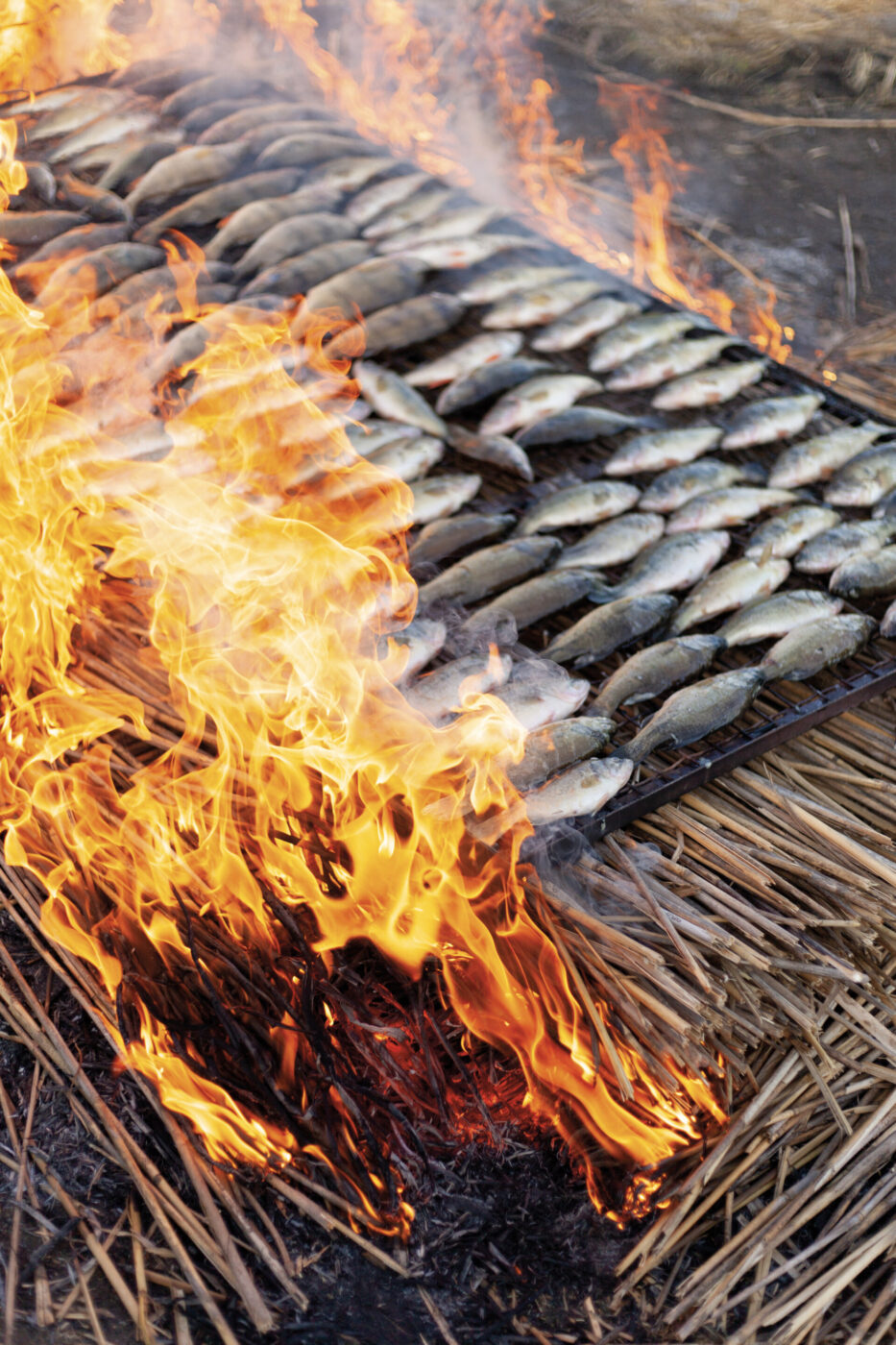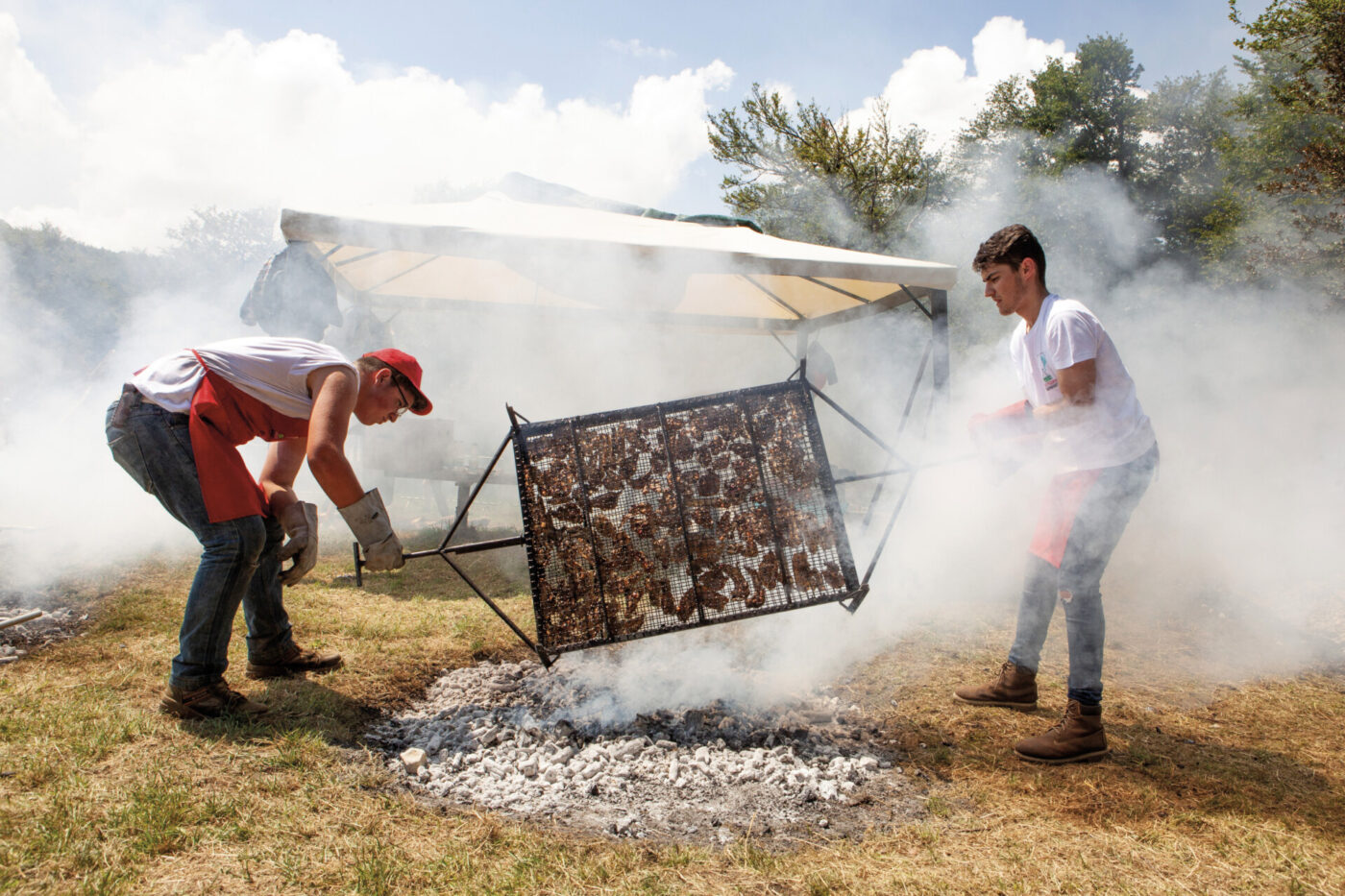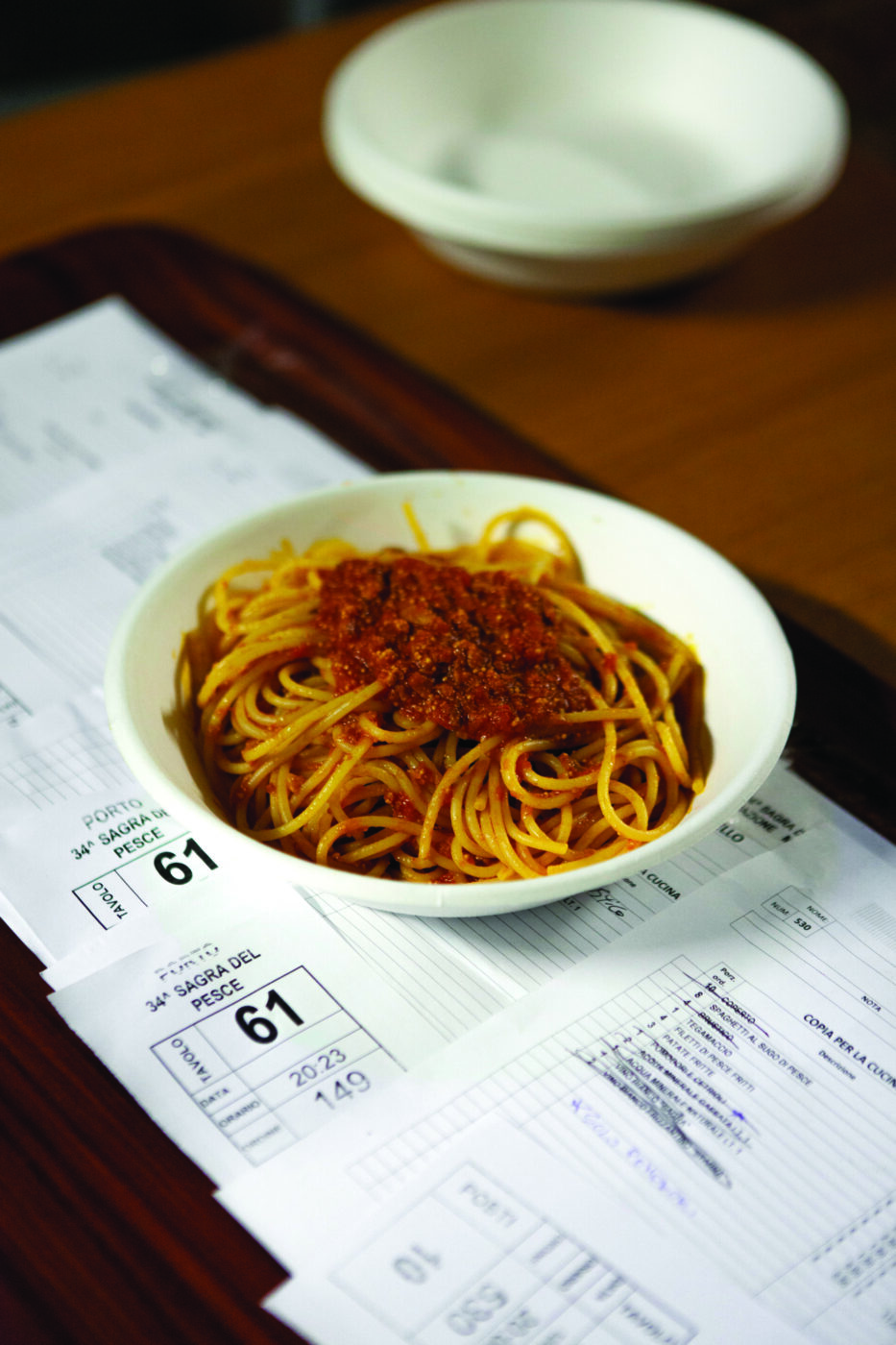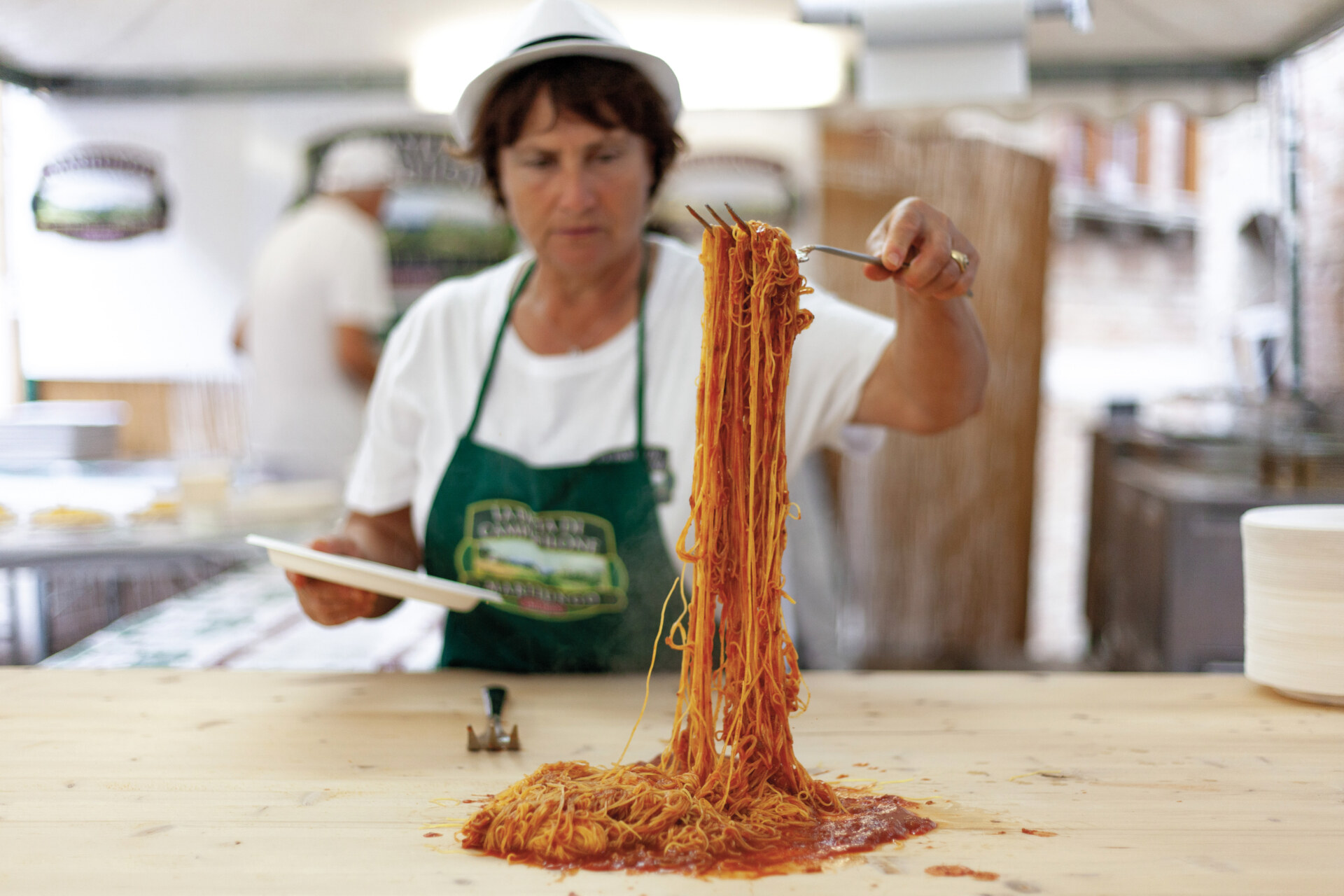
Sagra dei maccheroncini di Campofilone; Photography by Donatella Alquati and Giorgio Mininno
A poster printed on fluorescent-colored paper with large black letters: you don’t need to read it to know it’s an announcement for a sagra. In Italy, there are about 20,000 of these small-town fairs—some massive and tourist attractions, others so modest they gather only the locals, but always centered around food. Truffles, wine, fish, mussels, beans, sausages, or long-forgotten recipes are celebrated on disposable plates with paper tablecloths while seated on beer hall benches. From the Sagra della Polenta in the mountains of Valle d’Aosta to the Sagra del Fico d’India in Sicily, they all follow a similar format: for a few days each year, a group of volunteers sets up tables and stoves, organizes entertainment, buys groceries, and cooks, serving guests who, in exchange, make a financial contribution to support the local kindergarten or soccer field. Outside of major urban centers, the sagre calendar is packed; they’re where to find the social scene, especially come summertime when there’s often an accompanying dance floor and/or local band.
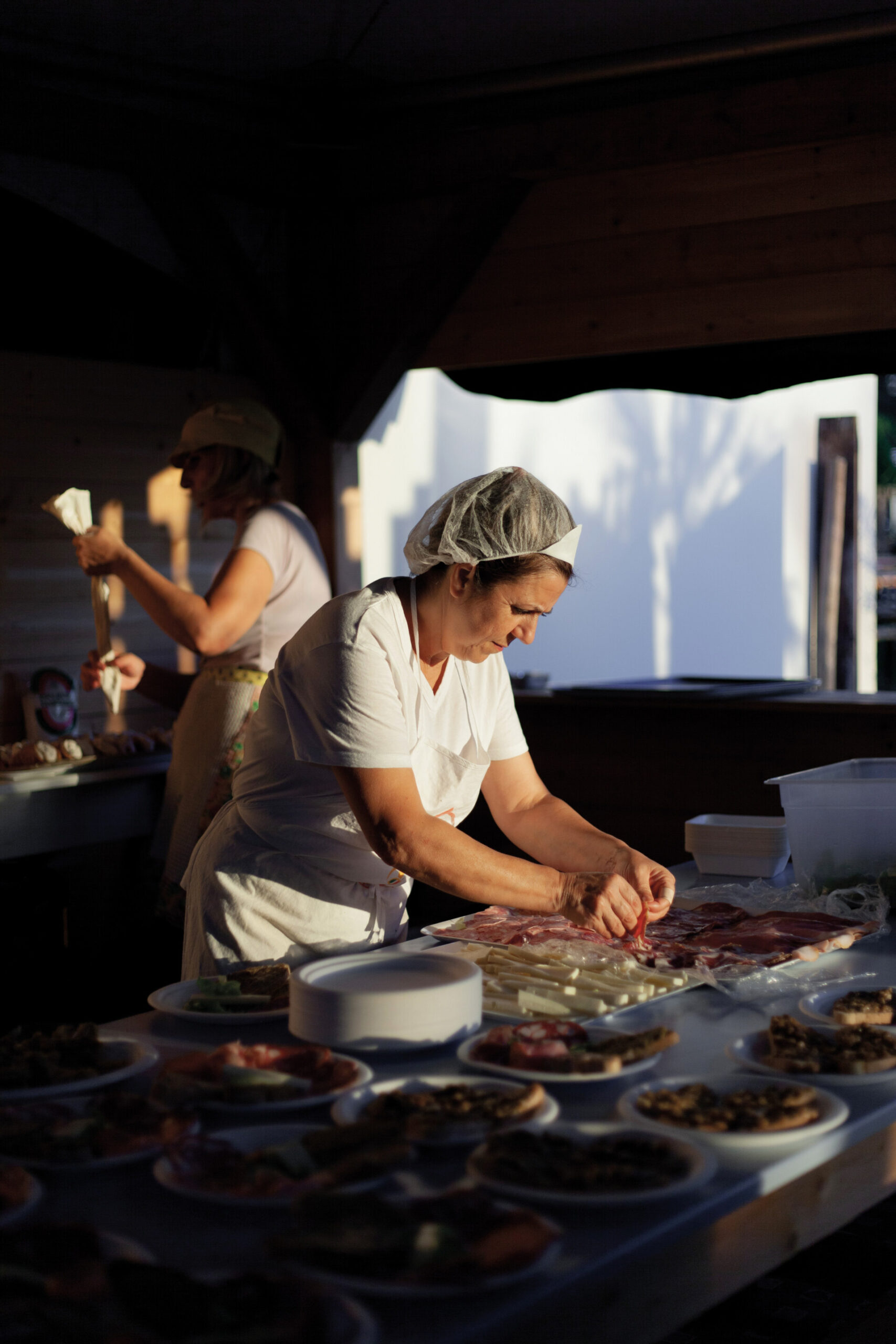
Sagra del Fungo di Bomarzo
The Invention of Tradition
Some sagre accompany the celebration of the town’s patron saint, recall pagan rites like harvests or plantings, or mark historical anniversaries. However, many are festivals invented by local councils called Pro Loco to raise funds (Pro Loco in Latin means “in favor of the territory”). The Sagra dei Osei in Sacile (Friuli-Venezia Giulia) is considered the oldest sagra in Italy and celebrated its 750th edition in 2023, though the “osei” (birds in dialect) are alive and kicking, rather than roasted. The longest-running food-related sagra is in Marche: the Sagra dell’Uva in Cupramontana has celebrated Verdicchio wine since 1928. During that period, the Fascist regime promoted grape festivals and even started an annual Festa dell’Uva, held every September from 1930 to 1938. Proposed by Mussolini’s Minister of Agriculture Arturo Marescalchi, the idea—beyond creating an economically viable solution to a table grape glut—was to promote communal activities and day trips to the countryside for families, workers, or students associations, who would gather along a table and enjoy local products and recipes. It revived an identity in (invented) rural traditions and promoted a stronger bond around food on a local and national level (the power of which politicians even today know well). The “tradition” took root, leading to the postwar boom of most of the sagre we know today, often dedicated to a local ingredient or recipe, cooked in large, homestyle portions.
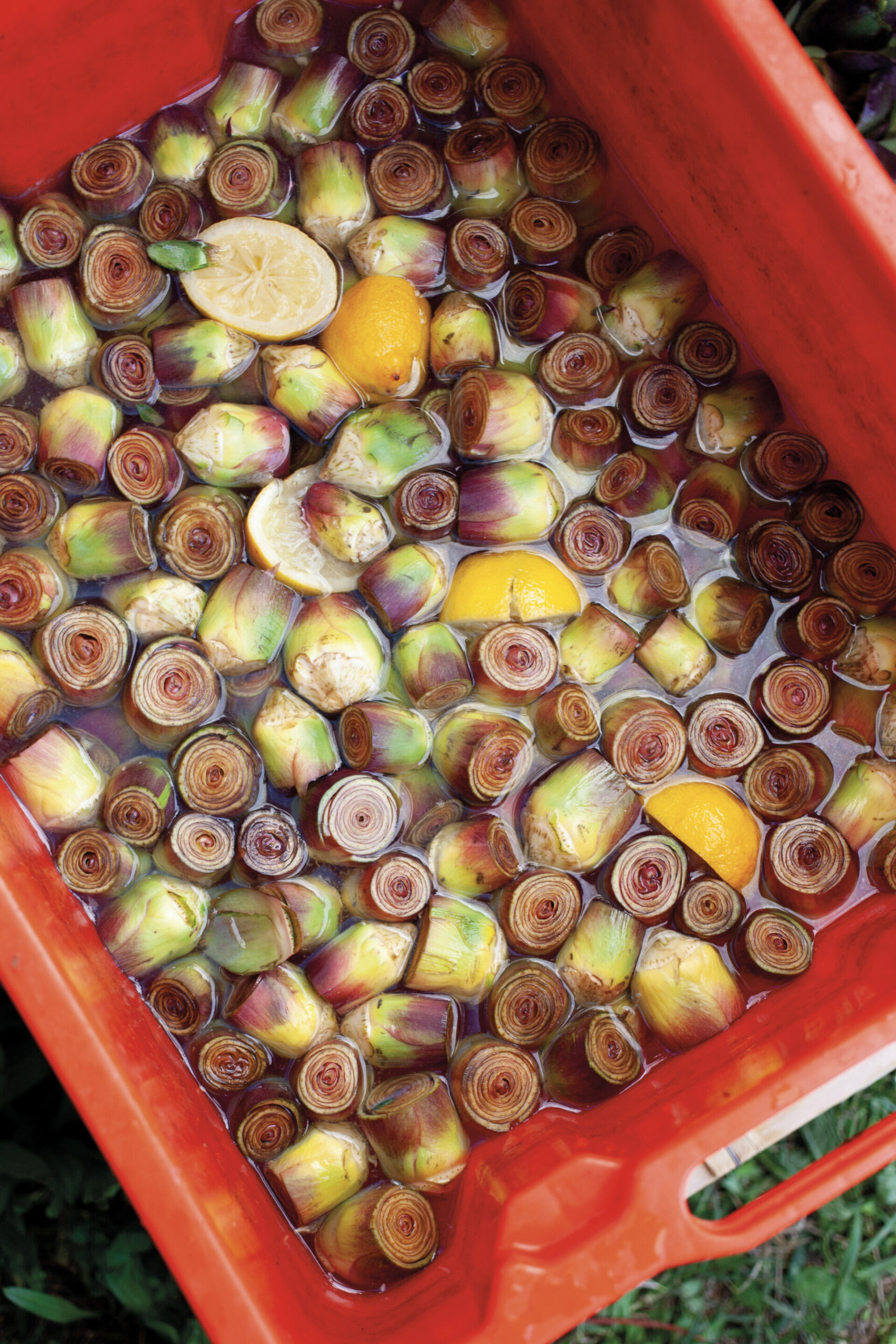
Sagra del Carciofo Vioetto in Sant-Erasmo, Venice
The First Guide to Italy’s Sagre
Despite the sheer number of sagre on offer, no one had mapped out the festivals until 2023, when Donatella Alquati and Giorgio Mininno published Sagre d’Italia for Slow Food Editore—a guide and photographic compendium, split up by region, of the festivals month by month. A designer and art director, respectively, the duo wanted to portray the raw, spontaneous beauty of the everyday in Italy.
“Sagre are weighed down by prejudice. On one side, the food world views them as the garbage of dining; on the other, the festivals themselves self-communicate as something truly ‘popular,’ trashy even. The narrative we wanted to create, however, avoided this aesthetic, aiming instead to become a reportage on the people, on the provincial Italian landscape, without cashing in on national stereotypes,” they say.
Their work spanned years and traversed the peninsula, resulting in a book filled with faces, dishes, long lines, communal tables, and a few recipes. How did they choose which festivals to include? “We excluded the extremes. We went small, down to the 150-person village festivals but avoided the bigger festivals that have turned into major events with handheld order systems and a brand identity that feels overly curated. Impressive, sure, but overly constructed.” Such large festivals often lose the personal touch between visitor and organizer, and the food shifts toward professionalism rather than homemade authenticity. “The smaller festivals are where you can eat exactly as the elders of the village do because they’re the ones cooking—not like in a trattoria but exactly as they do at home.” It’s not necessarily the best cooking, but it’s the most authentic, for better or worse.
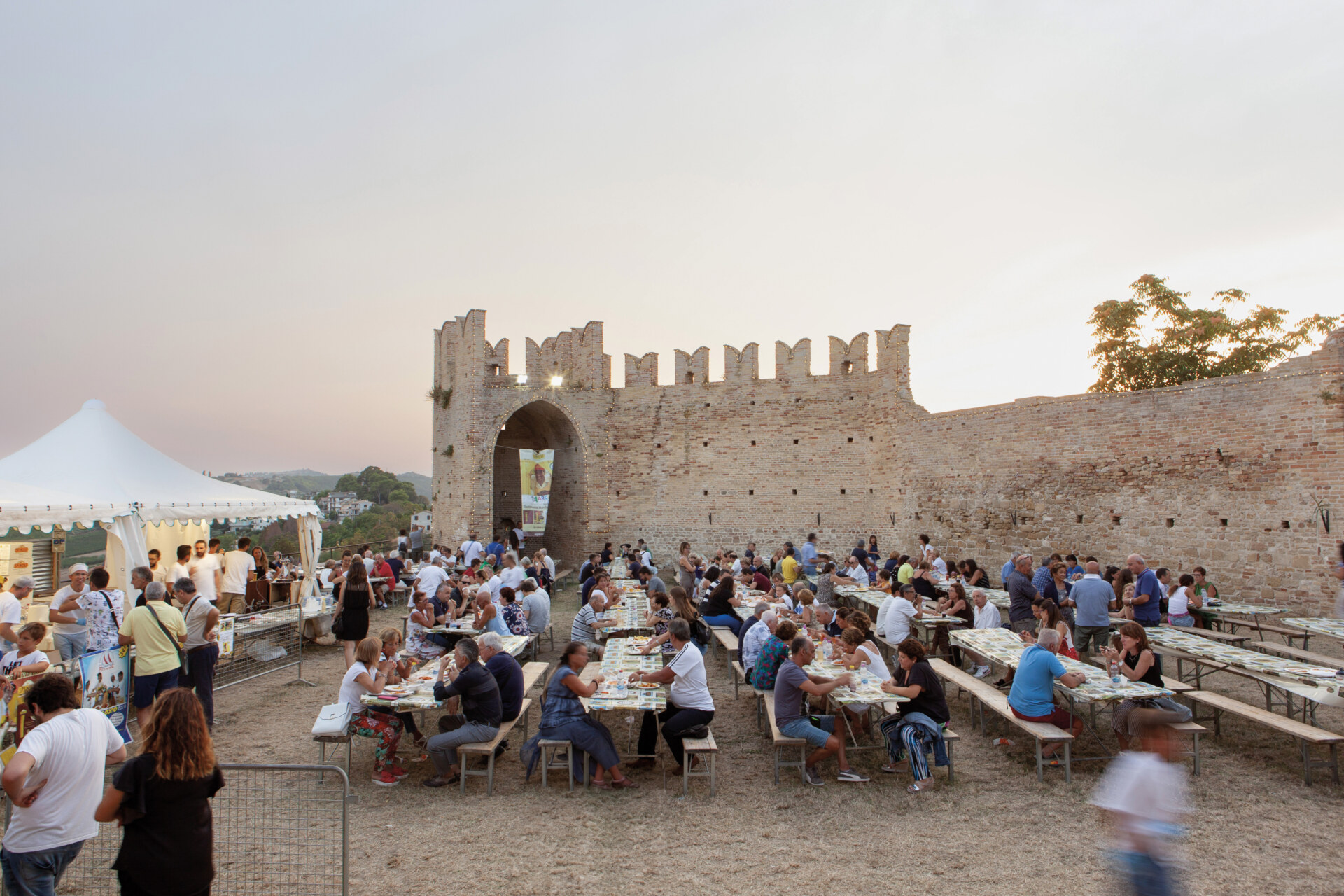
Sagra dei Maccheroncini di Campofilone; Photography by Donatella Alquati and Giorgio Mininno
In Search of the Exceptional
Even if they have little to do with the distant past, sagre evoke an idealized image of provincial Italy, creating a new memory of “how we were.” Some sagre offer ancient cooking techniques, like the Sagra delle Focaccette in Quercia (Liguria), where bread is cooked on terracotta discs over embers—an old tradition revived once a year since 1968. Other sagre are modern, invented recently by the local Pro Loco councils to boost tourism.
According to ENIT (the Italian Government Tourist Board), 48 million visitors attended summer festivals in 2023. And while Coldiretti (the farmers’ association) notes that almost half of festival-goers spend no more than €10, the numbers still represent a significant economic impact, especially for small towns and villages looking to attract tourism, even from the surrounding areas. Despite an attempt by the National Union of Pro Loco of Italy to establish a quality label for those who promote only “true traditions,” historical roots don’t make a sagra authentic—so how do you choose the best one? “It’s the sense of belonging and sharing that makes one experience better than another,” say Alquati and Mininno. “For the community, it’s coming together to cook and organize; for visitors, it’s the opportunity to chat with strangers at the table.”
That’s why the advice isn’t to search for the “best” sagra as a destination, but to travel, read the local press, follow posters on the street, and go to the nearest one—even if it’s small and held in a village parking lot.
